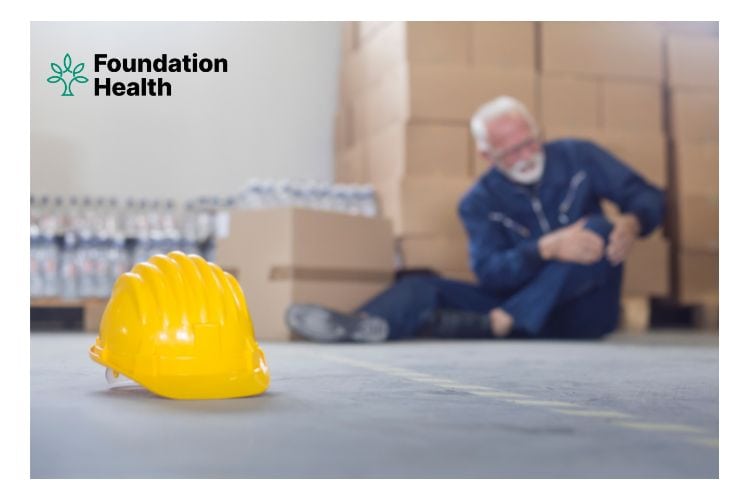Osteopathy is a holistic approach to healthcare that focuses on the body’s musculoskeletal system. It is a form of manual therapy that can be used to treat and prevent occupational musculoskeletal pain. Osteopathic treatment involves manipulating the body’s soft tissues, joints, and muscles to restore balance and improve function.
Osteopathy is an effective treatment for occupational musculoskeletal pain because it can help to reduce pain and improve mobility. It can also be used to prevent occupational musculoskeletal pain from occurring in the first place.
Osteopathic treatment can help to reduce the risk of developing occupational musculoskeletal pain by addressing the underlying causes, such as poor posture, repetitive motions, and insufficient rest periods.
What is occupational musculoskeletal pain?
Occupational musculoskeletal pain are injuries or conditions of the muscles, nerves, tendons, ligaments, joints, cartilage and other soft tissues caused by repetitive motion and improper body mechanics.
These types of injuries can result from work-related activities such as lifting heavy objects, using vibrating tools for extended periods and performing certain tasks in awkward postures.
Commonly referred to as ergonomic-related injuries or workplace-induced injuries, occupational musculoskeletal pain can be painful and restrict movement.
Common symptoms of occupational musculoskeletal pain
Symptoms include pain, stiffness, aching and/or numbness in the affected area. In some cases, individuals may experience weakness or fatigue that affects their ability to perform daily tasks.
With prompt treatment and careful management, most occupational musculoskeletal pain can be prevented and/or managed effectively.
Common causes of occupational musculoskeletal pain
Work-related musculoskeletal pain is classified as overuse injuries and overexertion injuries.
Overuse injuries at work, also known as repetitive strain injuries, include various inflammatory and degenerative pain.
Carpal tunnel syndrome, shoulder impingement syndrome, lateral epicondylopathy, and tendinopathy of the wrist or hand are a few examples. These conditions are commonly associated with repetitive, forceful, or awkward movements.
Overexertion injuries occur when muscles, ligaments, or tendons are overstressed during resisted movement. Overexertion mechanisms include lifting, pushing, pulling, or carrying weights that exceed a person’s capacity.
In an ergonomically poor workplace, joints, muscles, and tendons are subjected to biomechanical stress due to awkward movements and postures. There is a risk of injury when tissues are put under greater demands than they are structurally or physiologically capable of meeting.
These risk factors result from ergonomic stresses caused by prolonged or awkward postures, repetition without adequate recovery time, or the need to lift or move heavy loads.
Some ergonomic stressors put soft tissues in close contact with bone, causing friction and inflammation, while others put undue strain on muscles and connective tissues. The worker is likely predisposed to these effects due to baseline postural abnormalities and dysfunctional movement patterns.
Slips, trips, falls and blows also cause injuries among workers. These injuries are usually caused by environmental or performance problems.
Osteopathic interventions for occupational musculoskeletal pain
It is possible to reduce the risk of occupational musculoskeletal injuries and disabilities by ensuring that demands are matched to capacity, correcting dysfunctional movement patterns, and limiting tissue vulnerability to stress.
The goal of osteopathic treatment is to restore normal thoracic spine and rib cage mechanics while also improving transverse diaphragm movement.
Osteopathic treatment can also be used to improve the ergonomics of a workplace. By assessing the work environment and making adjustments, such as suggesting ergonomic chairs and desks, osteopaths can help to reduce the risk of developing an occupational musculoskeletal disorder.
In the workplace, interventions are implemented to reduce or eliminate stressors that overwhelm an individual’s capacity to accommodate or adapt to these conditions. As a result, musculoskeletal strain will be prevented.

Final thoughts on prevention of occupational musculoskeletal pain with osteopathy
Overall, osteopathy is an effective treatment for occupational musculoskeletal pain and can be used to both treat existing conditions and prevent them from occurring in the first place.
By addressing the underlying causes of occupational musculoskeletal pain, such as poor posture and inadequate rest periods, osteopathic treatment can help to reduce the risk of developing an occupational musculoskeletal disorder.
In addition, it can also be used to improve the ergonomics of a workplace and treat other conditions such as headaches, neck pain, and back pain.
Book an appointment at Foundation Health for osteopathic care for occupational musculoskeletal pain!


